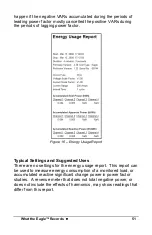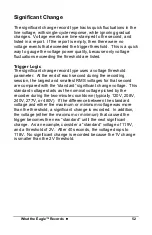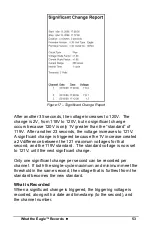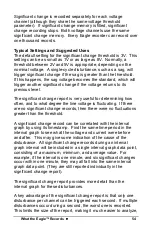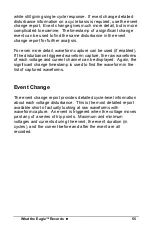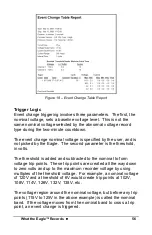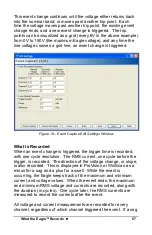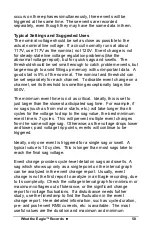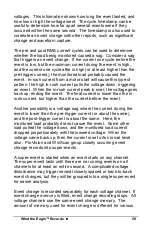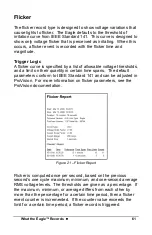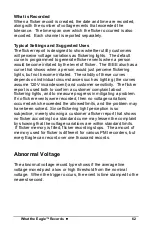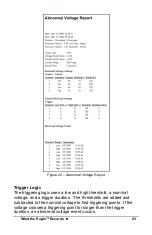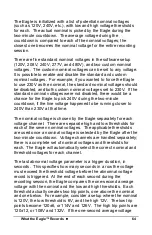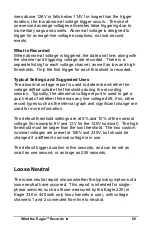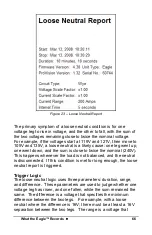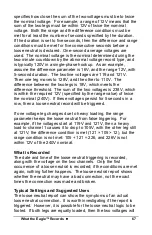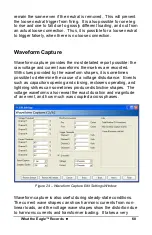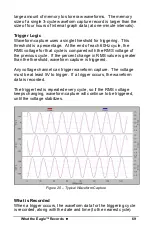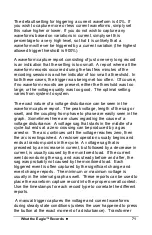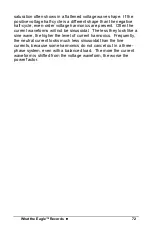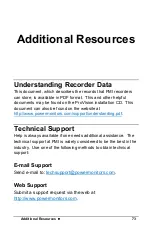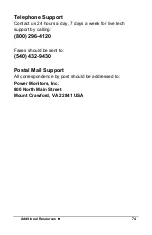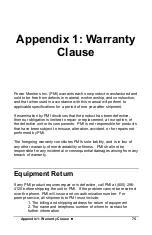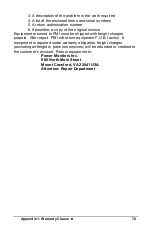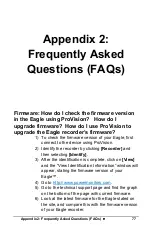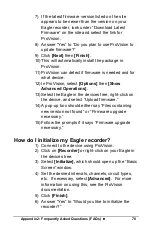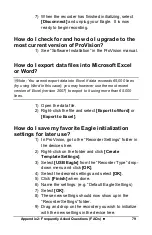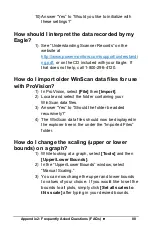
What the Eagle™ Records
••••
65
rises above 126V or falls below 114V for longer than the trigger
duration, the low abnormal voltage trigger occurs. The use of
one-second average voltages eliminates false triggering due to
momentary sags and swells. Abnormal voltage is designed to
trigger for average-line voltage exceptions, not sub-second
events.
What is Recorded
When abnormal voltage is triggered, the date and time, along with
the channel and triggering voltage are recorded. There is a
separate listing for each voltage channel, as well as low and high
thresholds. Only the first trigger for each threshold is recorded.
Typical Settings and Suggested Uses
The abnormal voltage report is used to determine whether the
voltage drifted outside the thresholds during the recording
session. Typically, the abnormal voltage report is used to get a
quick read of whether there was any line voltage drift; if so, other
record types such as the interval graph and significant change are
used for more information.
The default threshold settings are at 5% and 10% of the nominal
voltage (for example, 6V and 12V for the 120V nominal). The high
threshold must be larger than the low threshold. The two custom
nominal voltages are preset at 106V and 230V, but should be
changed if a different nominal voltage is in use.
The default trigger duration is five seconds, and can be set as
small as one second, or as large as 255 seconds.
Loose Neutral
The loose neutral report shows whether the typical symptoms of a
loose neutral have occurred. This report is intended for single-
phase services, such as those measured by the Eagle 220 (or
Eagle 330 or 440 with only two channels in use), with voltage
channels 1 and 2 connected from line to neutral.

